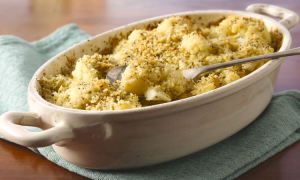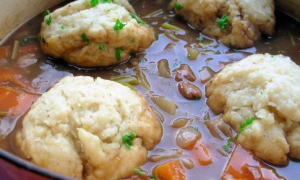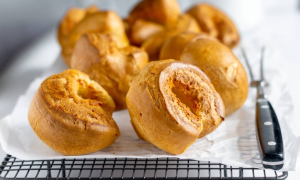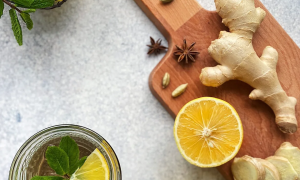
As you experiment with craft brewing java, you might end up interested in copying the specialization latte and cappuccino beverages from your favourite coffee shop.
It is easy, after a bit of exercise, and best of all you can control the quantity of foam you produce, out of a light coating on top of your java to a fluffy cloud of milk froth.
Coffee + Milk = Love?
Milk pairs so well with java because milk provides a layer of taste complexity that matches the flavors of the coffee. When added to milk, coffee makes a profound and complex flavor profile which highlights the organic floral, caramel, and roasted notes.
This is due to milk chemical composition (1). Milk is made up of sugars, fats, and proteins. These three chemicals help to create the feel and flavor we enjoy in our coffee and milk beverages.
How these proteins respond with air assists the invention of foam–rather microfoam, or even a selection of tight, little bubbles which form a creamy type of matrix throughout the surface of the liquid.
When glucose is warmed, it breaks down and caramelizes, helping to sweeten the milk. The proteins, after warmed, aid stiffen the bubbles, holding atmosphere in the milk to give it a mild body. At length, the fats melt down to make a smooth and velvety appearance and mouthfeel.
What Is The Difference Between Allergic And Frothing Milk?
Would you enjoy your espresso beverage using a big fluffy mound of milk foam piled on top? Or do you enjoy only a thin coating of almost microscopic bubbles over candy, hot milk blended with your own espresso shot?
Conserve
Conserve
If you are using an espresso maker with a steam wand, then the difference is as easy as deep you set the tip of the wand on your pitcher.
If you would like a major head of foam on top of your drink, maintain the tip of the batter just barely under the surface of the milk. This may draw air into the milk in addition to the steam, leading to massive bubbles which will produce the frothy, floating island of milk.
You’ll have to move the batter lower at the frothing pitcher in time to warm the milk but mainly you have to depart the tip close to the surface of the milk. As you exercise, listen into the steam drawing air into the milk.
Conserve
We have used water from the steaming pitcher to show the thickness of the steam wand at the liquid.
When you’re building up the froth, then you will see bigger bubbles since the milk expands, climbing the side of your pitcher. It is important to get a large enough pitcher to include the expanding milk. Your pitcher ought to be big enough that you simply fill it around 1/3 of the way with cold milk, allowing for expansion.
Conserve
You can see the suggestion of this steaming wand only barely breaking the surface of the milk.
Some espresso machines have a fashion of wand called a pannarello, made particularly to pull air into the milk since you steam. These create frothing nearly foolproof, but you can find a gorgeous mound of froth with any kind of wand. It only takes practice.
“You’ve got to cook a million steaks simply to suck it.” — Chef Thomas Keller, The French Laundry
If you would like steamed milk with no mound of foam, maintain the steam wand completely submerged from the milk, together with the tip of the steam wand or close to the face of the pitcher to make a spiral vortex, towards the base of the pitcher. This heats the milk and leads to miniature bubbles — sometimes referred to as microfoam — which provide the milk a silky consistency and then render just a very small layer of bubbles on the surface of your beverage. If you are considering latte artwork, this is the method to master.
Conserve
In comparison with the prior photo, you may observe the wand is a lot deeper in the milk.
While steaming, you’ll observe that the milk at the frothing pitcher doubles in quantity, even with no mind of froth described above. This is due to the microfoam bubbles integrated from the milk (3). You will taste that sweet taste and creamy feel as you sip your java or level white. Incidentally, here is where we contrasted both of these beverages.
When there are a couple of big bubbles staying on the face of this frothed milk, then tap on the pitcher securely against a counter or comparable surface, then swirl the milk round the pitcher. This suggestion generally eliminates larger bubbles.
Here’s our pleasure video on wheat berry:
And, here is Another treat for you guys, our guide on making latte artwork:
What Type Of Milk Works Best?
Always use fresh, cold milk — the freshest you can purchase . As milk approaches its best-by date, the capability to generate foam (if microfilm or a large frothy head) deteriorates. You can bake with it, create chocolate milk onto it, or put it on your cereal, but it will never give you the results you desire on your coffee unless it is scrupulously fresh. Just like with java beans, buy just as much as you are going to use per week.
The fat content impacts texture and flavor. If you’d like a great deal of stiff and foam bubbles, then go with skim milk or 2% milk. The comparatively higher protein content generates bubbles that maintain their atmosphere, and the greater proportion of sugar provides a sign of extra sweetness.
What about milk? The excess butterfat provides a milder, creamier consistency. You may still receive a good deal of attic on your mind — it only requires a bit more effort. And when you’re searching for steamed milk together with the lightest coating of microfilm on top, whole milk is creamier.
Should you consume plant-based milk, soy milk burns at a lower temperature compared to milk. Coconut milk has a high fat content which makes it rather creamy; additionally, it adds a tropical taste to your cappuccino, flat white or latte. (Here is where we contrasted the previous two beverages ).
“Non-fat milk, 2 percent milk, whole milk, organic milk and lactose-free milk may provide exceptional results for your latte. Soy milk, almond milk, rice, milk and coconut milk may also be heated to get a dairy-free latte substitute.” — Capresso
The Way to Steam Milk With No Espresso Maker
You have only made espresso, and want some frothed milk on top off it. However, your espresso machine doesn’t have any steam wand…what exactly do you do? No problem. It’s possible to heat mimilknd even froth milk, using lots of alternative practices and (mostly) normal kitchen gear.
In a microwave: Quantify out your milk to a glass jar with a tight-fitting lid — a Mason jar or jam jar will do (4). Then, shake the daylights out of this milk (you did remember to place the shirt in the beginning, right?) After the milk is tender, remove the lid and then soda up the jar from the microwave. This may heat the proteins from the milk and then place your own foam. Spoon this on your own java and revel in.
Using a French press: Quantify heated milk (purpose for 150 — 155 degrees F) to a French press coffee maker. Ensure that the milk amount is greater compared to steel filter in its lowest stage. Pump the plunger down and up fast to make air bubbles from the heated milk. Pour or spoon on your java.
Purchase a milk frother: in the event that you only need a way to warm milk and then give it a few bubbles, here is our review of this 5 finest products for doing this . They range from cheap frothing wands (you will want to warm the milk individually ) into some slick dedicated milk frother with its heating system and 2 frothing disks for different-size bubbles.
Using a saucepan and balloon whisk: Quantify out your milk into a small saucepan and put it on the stove above low-medium heat. Since the milk stinks, beat it immediately using a balloon whisk (the type you would use to beat egg whites or whipped cream). It is possible to use a hand mixer, but take care not to splatter milk over your cooker.
Itching to your latte game? Why don’t you select a latte machine within our listing?
Last Ideas
Whichever way you decide to assist you make milk-based coffee beverages, always keep in mind that slow and low heating will create the sugars and sweet flavor from the milk. Too quickly can result in scorching and bad-tasting milk.
Should you decide you would like to produce real cooked milk with proper texturing and microfoam, however, you’ll wish to obtain a true espresso machine similar to this one from Breville which is included with a fantastic steam wand.
If you’d like to create milk foam to improve your java, tools such as the Epica milk frother will heat and whip your milk about giving that sweet, foamed, and textured milk to your coffee.
Have you got any tips or hints? Which kind of milk do you prefer? Tell us in the comments below.






